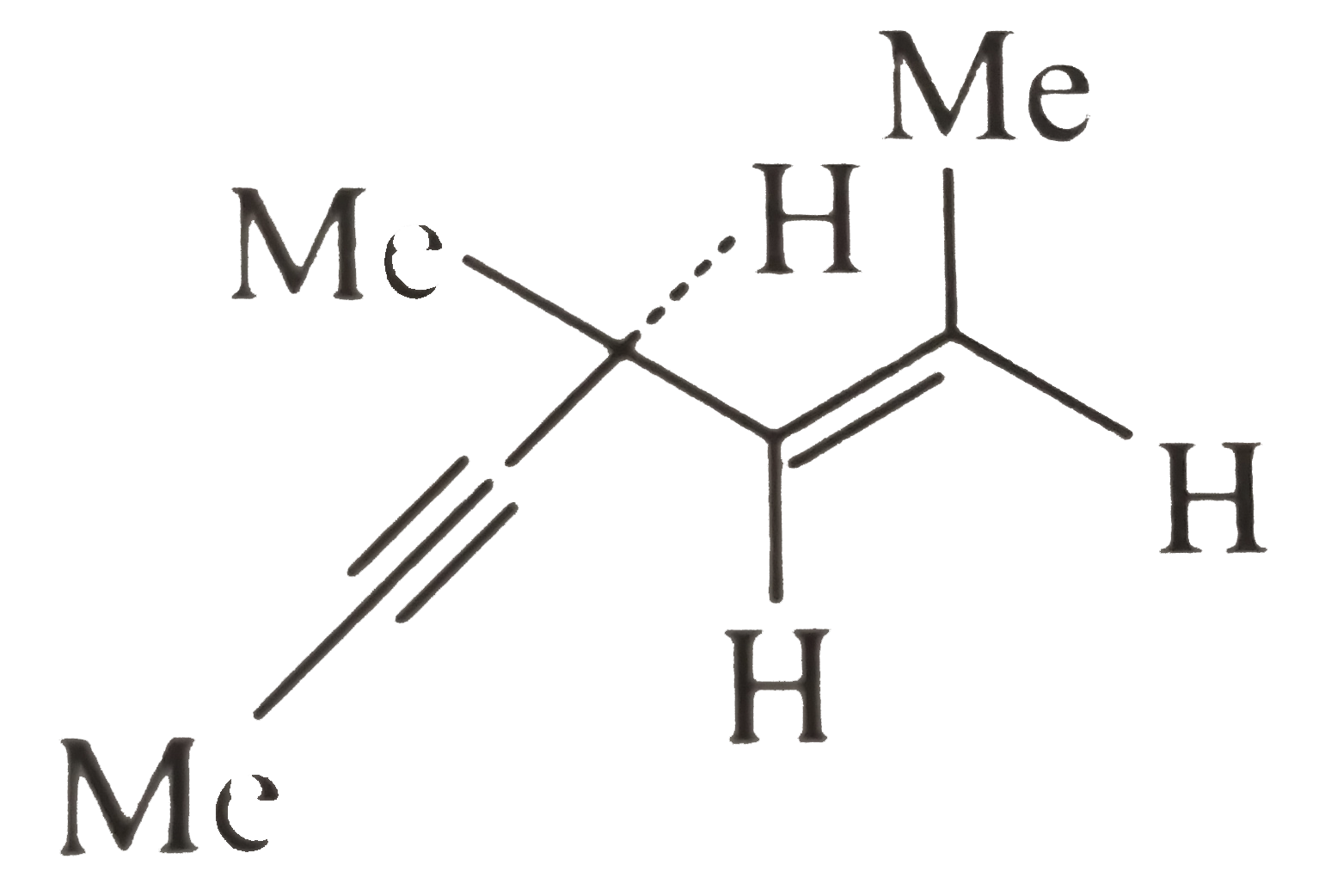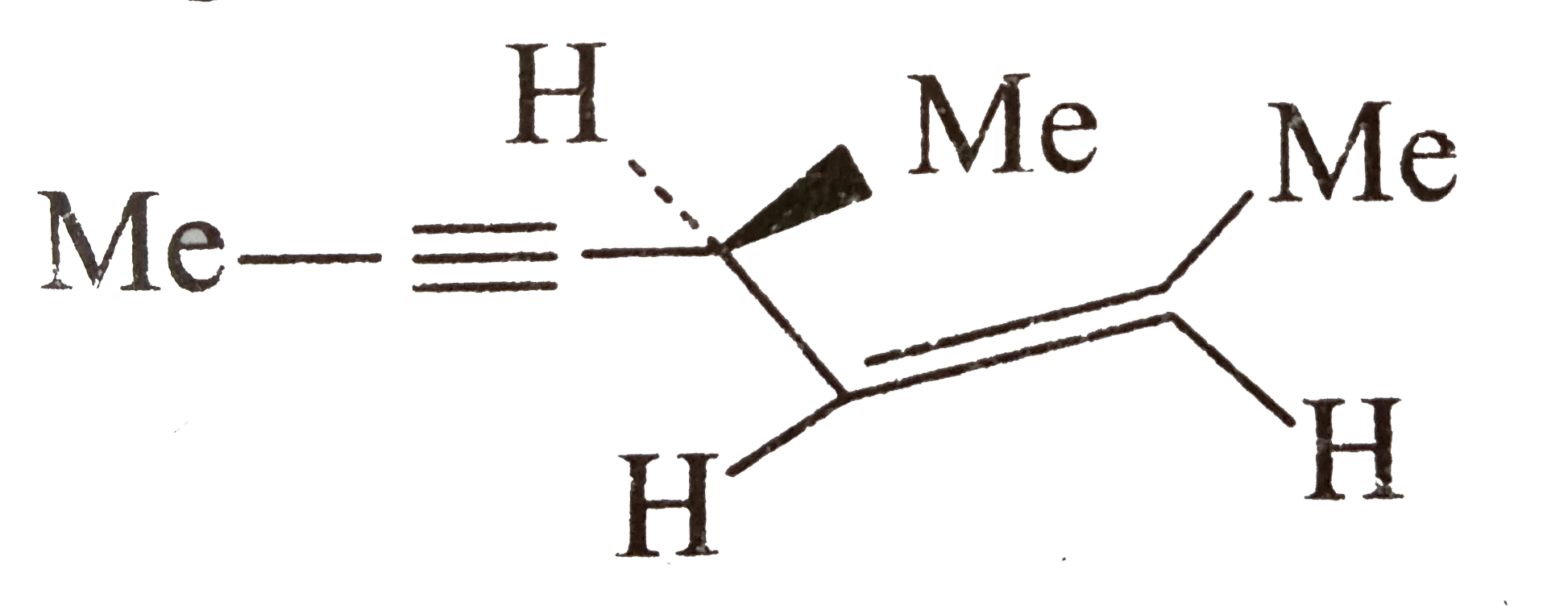
Hydrogenation of the above compound in the presence of poisoned Pd catalyst gives:
A
an optically active compound
B
an optically inactive compound
C
a racemic mixture
D
a diastereomeric mixture
Video Solution
Text Solution
The correct Answer is:B

By partial hydrogenation of (−C≡C−), an alkene is formed.
|
Topper's Solved these Questions
- ALKENES AND ALKADIENESBook:CENGAGE CHEMISTRYChapter:ALKENES AND ALKADIENESExercise:SUBJECTIVE TYPE
Explore 18 Videos
- ALKANES AND CYCLOALKANESBook:CENGAGE CHEMISTRYChapter:ALKANES AND CYCLOALKANESExercise:Archives
Explore 13 Videos
- ALKYNESBook:CENGAGE CHEMISTRYChapter:ALKYNESExercise:Exercises (Archives - Analytical and Desriptive Type)
Explore 4 Videos
Similar Questions
Knowledge Check
Hydrogenation of the adjoining compound in the presence of poisoned palladium catalyst gives.
 Aan optically active compoundBan optically inactive compoundCa racemic mixtureDa diastereomeric mixture
Aan optically active compoundBan optically inactive compoundCa racemic mixtureDa diastereomeric mixtureCH3−CH2−CH2−CO−CH2−CH(CH3)2
Catalytic hydrogenation of above compound m the presence of nickel catalyst givesAan optically inactive compoundBan optically active compoundCcompound with plane of symmetryDan tertiary alcoholHydrogenation of the following compound in the presence of poisoned palladium catalyst gives
 Aan optically active compoundBan optically inactive compound.Ca racemic mixtureDa diastereomeric mixture
Aan optically active compoundBan optically inactive compound.Ca racemic mixtureDa diastereomeric mixture
Hydrogenation of the compound using D2/Pd gives :

View Solution Hydrogenation of the above compound in the presence of sodium in liquid ammonia gives -
Hydrogenation of the above compound in the presence of sodium in liquid ammonia gives -
View SolutionHydrogenation of the compound

with H2 in the presence of Lindle catayst gives
View Solution
Dehydration of the above compound will give:
View SolutionReduction of H3C−NC with hydrogen in the presence of Ni/Pt catalyst gives
View Solution



